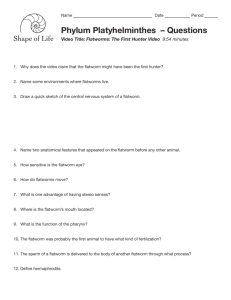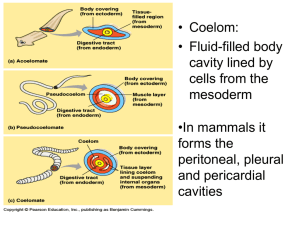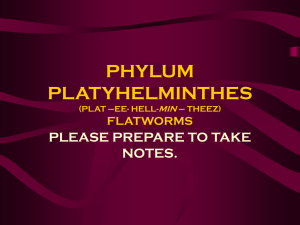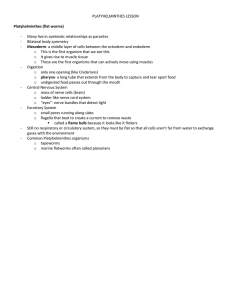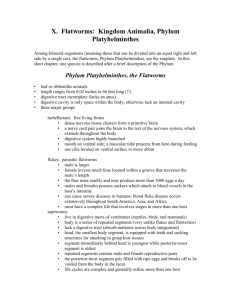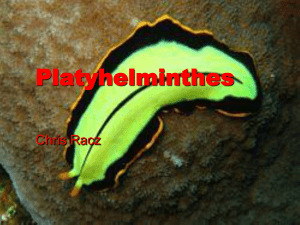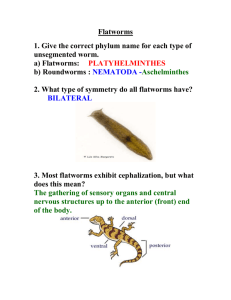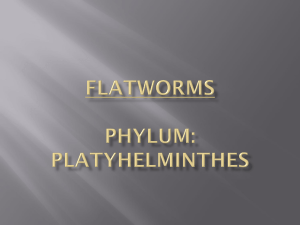Flatworms - Sacramento Splash
advertisement
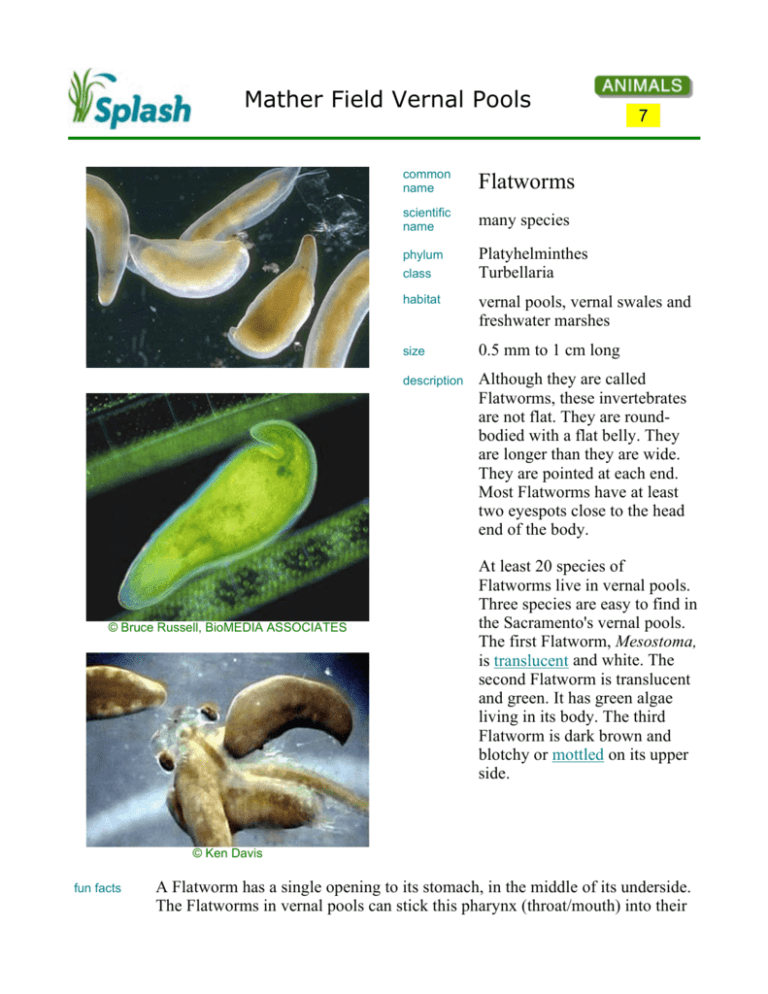
Mather Field Vernal Pools common name Flatworms scientific name many species phylum Platyhelminthes Turbellaria class © Bruce Russell, BioMEDIA ASSOCIATES 7 habitat vernal pools, vernal swales and freshwater marshes size 0.5 mm to 1 cm long description Although they are called Flatworms, these invertebrates are not flat. They are roundbodied with a flat belly. They are longer than they are wide. They are pointed at each end. Most Flatworms have at least two eyespots close to the head end of the body. At least 20 species of Flatworms live in vernal pools. Three species are easy to find in the Sacramento's vernal pools. The first Flatworm, Mesostoma, is translucent and white. The second Flatworm is translucent and green. It has green algae living in its body. The third Flatworm is dark brown and blotchy or mottled on its upper side. © Ken Davis fun facts A Flatworm has a single opening to its stomach, in the middle of its underside. The Flatworms in vernal pools can stick this pharynx (throat/mouth) into their prey. Like a short vacuum cleaner hose, it sucks out the insides of their prey. They also use it to push wastes out of their bodies. life cycle Flatworms are one of the first critters to hatch when the pools start filling with rainwater. The young hatch from eggs and look similar to the adults. When they are mature, Flatworms mate and lay dark, round eggs. Most Flatworms are hermaphroditic, meaning they are both male and female. Every Flatworm can mate with any other Flatworm if it is the same species. ecology Flatworms are eaten by the adults and larvae of Aquatic Beetles. The Flatworms in vernal pools eat Bacteria, Algae, Protozoa, and small invertebrates such as Fairy Shrimp. Some Flatworms scavenge on dead and dying invertebrates. The white Flatworm, Mesostoma, hangs a thread of slime in the water to trap Water Fleas. It returns to check its "trap line" to harvest any Water Fleas caught in the slime. A Flatworm moves by rowing its many tiny, thin, hair-like structures called cilia on the outside of its body. Its flat belly allows it to glide on the water surface, while its cilia gently move it along in search of food or a mate. investigate Watch for the brown Flatworms that glide on the surface of the vernal pools. They respond to vibrations on the water surface to hone in on prey. If an insect drops (or you tap) on the water surface, the Flatworms will move toward the disturbance, hoping to catch some prey in distress. ©
